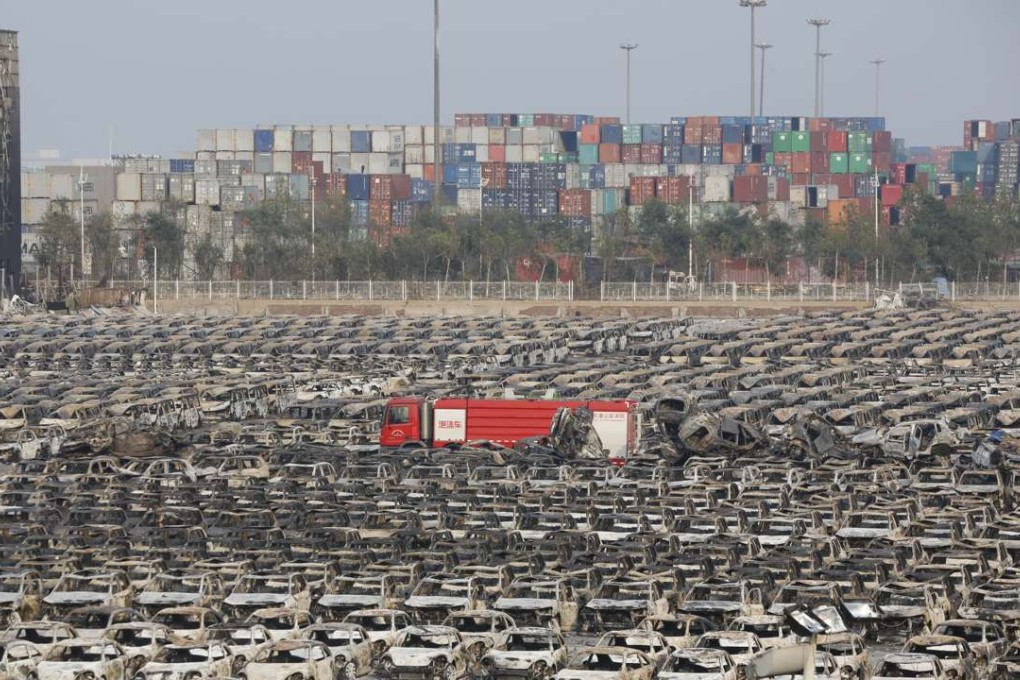How Tianjin’s economy proved immune to one of China’s worst industrial accidents
In wake of chemical disaster that killed 173, the region’s economy reports growth of 9.3 per cent. But for the cargo industry, the pain remains

Tianjin ( 天津 ) seems to have put last year’s deadly explosions in the Binhai New Area behind it after reporting robust growth in economic output.
But the question remains: Can businesses really be immune to such a scandalous accident – one that claimed 173 lives and devastated 10,000 homes?
Cao Ye, a senior manager with German shipping firm Rickmers’ Beijing branch, said the city government’s subsequent ban on hazardous goods being loaded or discharged at the port was “painful” and it continued to take a toll on ocean transportation businesses.
“Cargo owners have to pay thousands of yuan extra to send their goods to other ports for loading,” she said.
I thought I was going to die: Tianjin residents recall their long night of fear
The explosions on August 12, 2015, at a warehouse operated by Ruihai International Logistics where 11,000 tonnes of chemicals and hazardous goods were stored, was estimated to have caused losses of 70 billion yuan (HK$82 billion).
That is equivalent to 4.2 per cent of Tianjin’s total economic output in 2015, which topped 1.65 trillion yuan with year-on-year growth of 9.3 per cent, making the municipality one of the mainland’s fastest-growing provincial-level regions. During that time national economy expanded just 6.9 per cent, the slowest in a quarter of a century.
